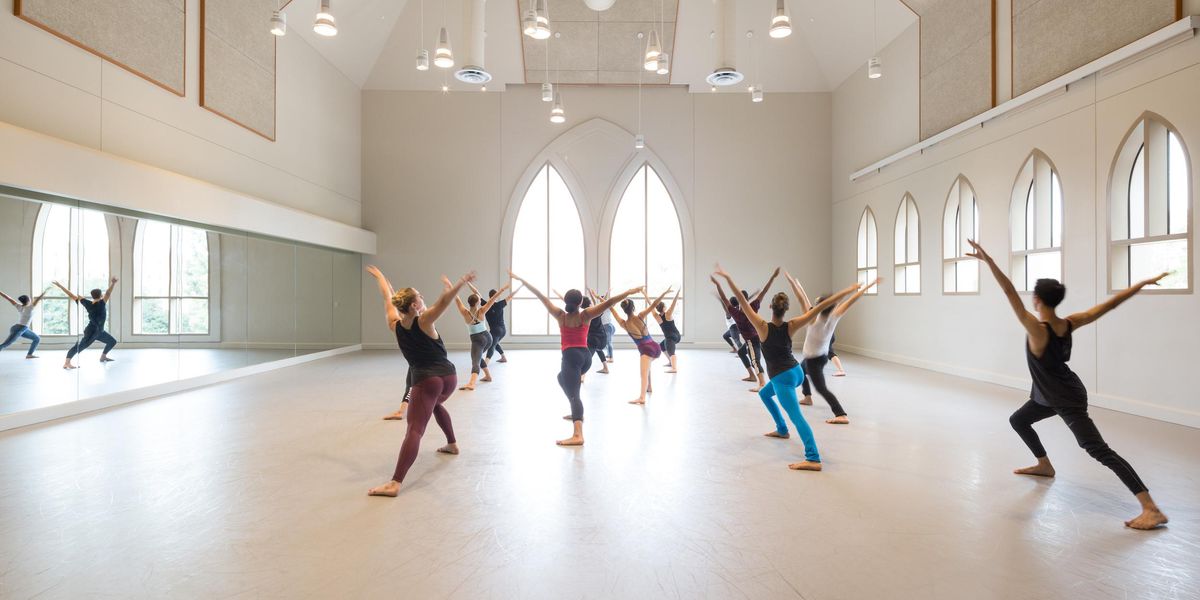On The Rise: Sara Mearns
From Swan to Swan Queen, this NYCB dancer is living the dream.
New York City Ballet’s Sara Mearns has blasted from earth straight to the stars. After spending six weeks of Nutcracker dancing roles typical for a second-year corps dancer—party scene Parent, Snowflake, and Flower—she was suddenly called to rehearse the leading role of Odette/Odile in Peter Martins’ full-length Swan Lake. With three weeks of preparation and no comparable performing experience, Mearns impressed audience and colleagues alike with her technically solid, emotionally expressive debut, at the ripe old age of 19. Tall, blond, and glamorous, Mearns’ broad torso gives her an earthy presence, while her long tapering limbs seem to draw energy far beyond her body. Her technique is rock solid, even under tremendous pressure, and her delicate wrists and hands add an unusual sensitivity that sets her apart.
As Odette, Mearns’ capacity for romance and vulnerability are clear as she melts into her partner’s arms. Her fluttering wings shift from fearsome to nest-ling. Perching herself high on pointe, she extends every movement to its fullest. And her Odile is convincingly manipulative. She conveys the Black Swan’s power with fiercely seductive looks and a confident carriage.
Mearns’ success in Swan Lake has led to a cascade of new opportunities, including a promotion to the rank of soloist in March. Leads in Martins’ Octet and Balanchine’s Western Symphony and Brahms-Schoenberg Quartet are likely to be only the beginning of her new repertoire. Richard Tanner, who cast her in his neoclassical pas de deux, Sonatas and Interludes, says he noticed Mearns while she was a student at the School of American Ballet. “She’s limpid, liquid, and lyrical—there simply aren’t many girls who can move like that.”
Mearns was born and raised in Columbia, South Carolina, where she trained with Ann Brodie until the age of 12. Besides ballet, she studied jazz and tap. Mearns credits her mother for giving her constant support. Her mom drove her 200 miles each day to study with Patricia McBride after Ms. Brodie died, made all her costumes, and provided the necessities for her to pursue dancing even though money was tight. Mearns continued her training with Stanislav Issaev at the South Carolina Governor’s School for the Arts and Humanities and spent four summers at SAB before staying for the year in 2001. Once she came to New York and was exposed to other talented teens, Mearns realized she’d have to work harder than before. Since joining NYCB, Mearns tries to improve each day in ballet class while working to maintain a healthy mindset. She knows that even though she has achieved so much so fast, a ballerina’s career is built on longevity and reliability.
Though she says that she never felt like a favorite at SAB, Mearns was nominated for the Princess Grace Award and received the Mae L. Wien Award for Outstanding Promise in 2003. One of her teachers at SAB, Susan Pilarre, describes Mearns as “unassuming with a fantastic personality, a rare inner beauty, and a lovely facility.” Astonished by Mearns’ performance in Act I of Swan Lake, Pilarre went backstage during the intermission to congratulate her. A testament to how calm and composed Mearns was even then, Pilarre found her comforting the new young conductor who was concerned he’d played it too fast. “Don’t worry,” she told him. “I can handle it. ”
Since Mearns had never danced a solo with the company, she didn’t feel the pressure of expectation. Instead, she says, “I had to prove to myself that I could do this. I focused on getting through all four acts, taking it one entrance at a time.”
When asked if she has any role models, Mearns is quick to name Natalia Makarova. She spent hours, even before she was called to learn Swan Lake, watching videos of Makarova, examining how she created such exquisite effects with her upper body and her acting. “It’s the details that make Makarova so special,” she says. “But my goal right now is to grow into my own way of dancing and not to copy anyone else. I want to continue working on articulation and control and make the most of each opportunity.”
One of the most satisfying aspects of watching Mearns dance is that she seems comfortable in her own skin. She draws the audience in and enables us to enjoy her dancing as a whole, not just technique or flair, at this exciting stage of her artistic development.
Dena Abergel is a dancer with NYCB and editor of the SAB newsletter.




